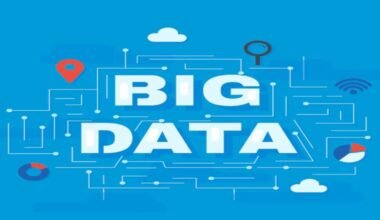Summary: This blog compares Edge Computing vs. Cloud Computing, outlining their definitions, advantages, real-world examples, and future trends. It highlights how both technologies serve different needs and how understanding them is essential for data science, IoT, and modern business operations.
Introduction
The world is undergoing a massive digital transformation, with technology playing a pivotal role in changing how we live, work, and connect. You’ve also likely encountered the terms Edge Computing and Cloud Computing.
These two concepts are revolutionizing the way we manage and process data. Although they are often used interchangeably, they each have their own strengths and characteristics that make them unique.
In this blog, we’ll dive into a fun and easy-to-understand comparison between Edge Computing and Cloud Computing—helping you grasp the key differences, their advantages, real-world applications, and challenges. Let’s break it down!
Key Takeaways
- Cloud Computing enables scalable, remote data access, ideal for large-scale applications.
- Edge Computing processes data locally, offering real-time responses for critical tasks.
- Both technologies have unique advantages and complement each other in hybrid systems.
- Real-world uses include autonomous cars (Edge) and cloud storage services (Cloud).
- Understanding both is essential for careers in data science, AI, and IoT.
The Cloud Computing Landscape
Cloud Computing is often seen as the backbone of modern technology. So, what exactly does that mean? Well, instead of using physical hardware and servers on-site, Cloud Computing lets businesses and individuals store data and run applications over the internet.
It’s like renting a storage unit where you can stash all your stuff, and you only pay for the space you use. Pretty cool, right?
The global cloud computing market is booming, with its size estimated at USD 752.44 billion in 2024. It’s projected to grow at an impressive compound annual growth rate (CAGR) of 20.4% from 2025 to 2030. This incredible growth underscores how integral Cloud Computing has become in today’s digital landscape.
Cloud providers like Google, Amazon, and Microsoft offer remote servers that allow people to access and manage data and apps from anywhere, anytime. Whether you’re a business owner or someone who just needs a place to store pictures, Cloud Computing is your go-to solution.
Advantages of Cloud Computing
Why has Cloud Computing become so popular? Let’s take a look at some of its major perks:
- Scalability: You can easily scale up or down your resources depending on your needs. Imagine you’re throwing a huge party and need more chairs—Cloud Computing lets you rent as many as you need.
- Cost-Efficiency: Say goodbye to expensive hardware and maintenance. Cloud services let you pay only for what you use, saving you money on unnecessary infrastructure.
- Accessibility: As long as you have an internet connection, you can access your data and apps from anywhere. This makes remote work and collaboration much easier.
- Flexibility: Choose from a variety of services, including Infrastructure as a Service (IaaS), Platform as a Service (PaaS), and Software as a Service (SaaS), depending on how much control you need.
- Speed & Agility: Cloud services are quick to set up and deploy, so businesses can innovate faster and get products to market quicker.
- Reliability: Cloud providers back up your data, so even if something goes wrong, your information is safe and easy to restore.
Edge Computing: The Local Hero
Now, let’s shift gears and talk about Edge Computing. This is the cool new kid on the block. Instead of sending all your data to the cloud, Edge Computing processes the data right where it’s generated—closer to the “edge” of the network. This reduces the amount of time it takes to get results, especially for applications that require instant responses.
In fact, the global Edge Computing market was valued at USD 16.45 billion in 2023, and it’s expected to grow at a jaw-dropping compound annual growth rate (CAGR) of 36.9% from 2024 to 2030. This rapid growth shows just how much businesses are embracing Edge Computing to meet the increasing demand for faster, real-time data processing.
Think of it like this: In Cloud Computing, if you want to ask a question, you send it far away (to the cloud) and wait for the answer. With Edge Computing, you ask right next to you, getting a response almost instantly!
Advantages of Edge Computing
Edge Computing brings data processing closer to where it’s generated, which has some big advantages:
- Low Latency: Processing data locally means no delays. For applications like self-driving cars or factory machines, immediate responses are crucial.
- Real-Time Processing: Edge devices process data as it’s collected, enabling instant decisions. Imagine a hospital monitoring patient vitals—every second counts!
- Bandwidth Optimisation: Edge devices only send relevant data to the cloud, reducing network congestion and making the entire system more efficient.
- Privacy & Security: Since the data stays local, there’s less chance of it being intercepted or stolen during transmission. This is a game-changer for sectors like healthcare and finance.
- Offline Operation: Even when there’s no internet, Edge devices can keep working. This is a huge benefit for remote locations where internet connectivity isn’t guaranteed.
Edge Computing vs. Cloud Computing: Real-World Examples
Let’s look at how these two technologies are used in the real world.
Edge Computing Examples
- Autonomous Vehicles: Self-driving cars need to make decisions instantly. They process data locally, so they can react in real-time without waiting for data to be sent to the cloud.
- Smart Manufacturing: Factories use Edge Computing to monitor machines and processes in real-time, improving efficiency and safety.
- Healthcare: Edge devices in hospitals can monitor patients’ conditions continuously, alerting doctors to any changes without the need to send data far away.
Cloud Computing Examples
- Data Storage: Services like Amazon Web Services (AWS) and Google Cloud let businesses store large amounts of data remotely, accessible from anywhere.
- Web Applications: Cloud Computing powers apps like Google Docs and Dropbox, where you can store and edit documents online.
- Big Data Analytics: Cloud services can analyze massive datasets to uncover trends, helping businesses make data-driven decisions.
Challenges of Edge Computing
While Edge Computing is super cool, it comes with its own set of challenges:
- Limited Resources: Edge devices might not have the processing power of cloud servers, so they can’t handle complex tasks.
- Network Connectivity: Since Edge devices rely on local networks, any disruptions in connectivity can affect performance.
- Data Management: With data being processed in multiple places, managing and storing it efficiently can be a hassle.
- Security: More devices mean more potential entry points for cyber threats. Securing all edge devices is crucial.
Challenges of Cloud Computing
Cloud Computing isn’t without its challenges either:
- Data Security: Storing data off-site means trusting cloud providers to keep it safe. Breaches or unauthorized access can be a concern.
- Cost Management: While cloud computing offers a pay-as-you-go model, costs can still add up quickly if not monitored carefully.
- Network Dependence: Cloud services require a reliable internet connection. If your internet goes down, so does your access to the cloud.
The Future of Edge Computing and Cloud Computing
Both Edge Computing and Cloud Computing will continue to evolve and work together to power the next generation of digital technologies.
- Edge Computing will become more powerful, with enhanced processing capabilities and tighter integration with AI and IoT. This will enable even more sophisticated real-time applications, from autonomous vehicles to smart cities.
- Cloud Computing will remain a central part of the digital landscape, supporting large-scale data storage and processing. Future advancements in AI and Big Data will make cloud services even smarter and more powerful.
Summing It All Up
Edge Computing and Cloud Computing are shaping the future of how we process, store, and analyze data. While Cloud Computing offers scalability and accessibility, Edge Computing delivers real-time responsiveness where speed matters most.
For aspiring data professionals, understanding the differences and real-world applications of these technologies is crucial. Both play a significant role in the field of data science, enabling smarter analytics and decision-making.
If you want to stay ahead in this fast-evolving tech landscape, consider joining industry-relevant data science courses by Pickl.AI. Learn to build solutions that combine the best of edge and cloud capabilities.
Frequently Asked Questions
What is the key difference between Edge Computing and Cloud Computing?
Edge Computing processes data near the source, offering low latency and real-time responses. Cloud Computing processes data on centralized servers over the internet, providing scalability and broad access. The choice depends on speed, data volume, and the application’s requirements.
How does Edge Computing benefit data science applications?
Edge Computing enables real-time data collection and processing, which is essential in applications like IoT, smart cities, and predictive maintenance. It allows data scientists to build models that act instantly on local data, improving performance and enabling faster insights.
Can Edge Computing and Cloud Computing work together?
Yes, they complement each other. Edge Computing handles immediate data processing at the source, while Cloud Computing manages long-term storage, deeper analytics, and global access. This hybrid approach provides both speed and scalability in modern data systems.




